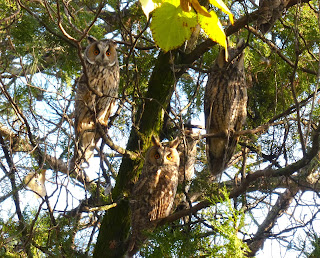The 2011 London Bird Report
The latest LBR, as it is affectionately known, plopped onto my doormat last week. Being a London-based birder I am naturally very interested in learning about the avian occurrences in my home city. I have avidly studied the pages of the successive editions of the LBR for more years than I care to admit. Plus, during those years I managed to acquire even older LBR issues spanning back decades that documented breeding Red-backed Shrikes and floods of Black Redstarts.One of the great things about the LBR is that it has finally caught up with the times. By that I mean that it is now only a couple of years behind - totally acceptable - compared to the hopelessly delayed production schedule of old. But even then, as it is now, the editorial content was superb. I'm pleased to say that in the 2011 edition, more than any other, were great images of common birds as well as a few of the rarities thrown in. In the past there was a over emphasis on the rare and exotic so it's really good to see that an effort has been made to attract ordinary birders to its pages.
The 2011 edition more or less follows the usual running order that this publication has historically followed: a list of the rarities committee and recorders, a breakdown of the recording area, a brief review of the year, a list of the contributors followed by the systematic list of the birds found in London during the year. This is the meat of the report. Usually, there is a sponsored colour plate section in the centre of the book. This year the images are sprinkled throughout the accounts. A much more pleasing arrangement if you ask me. My only gripe being that some the species images were often placed alongside the text of an unrelated species. I can't fault the editorial compilations and I have to compliment the editorial team for the obvious hard work that has gone into producing the species accounts.
Following the species listings are the appendices covering escapes, hybrids and non-proven records. They are in turn followed by a series of papers largely on the birds of individual sites as well as the results of ringing records and WeBS counts (the British Trust for Ornithology's Wetland Bird Survey). The LBR is one of the best annual bird reports in the land and is a great testament to the number of birds to be found in and around the capital. Proof that urban birding can be very rewarding, even in the heart of Britain's biggest city.
The London Bird Report is published by the London Natural History Society http://www.lnhs.org.uk/ priced at £8.00




























